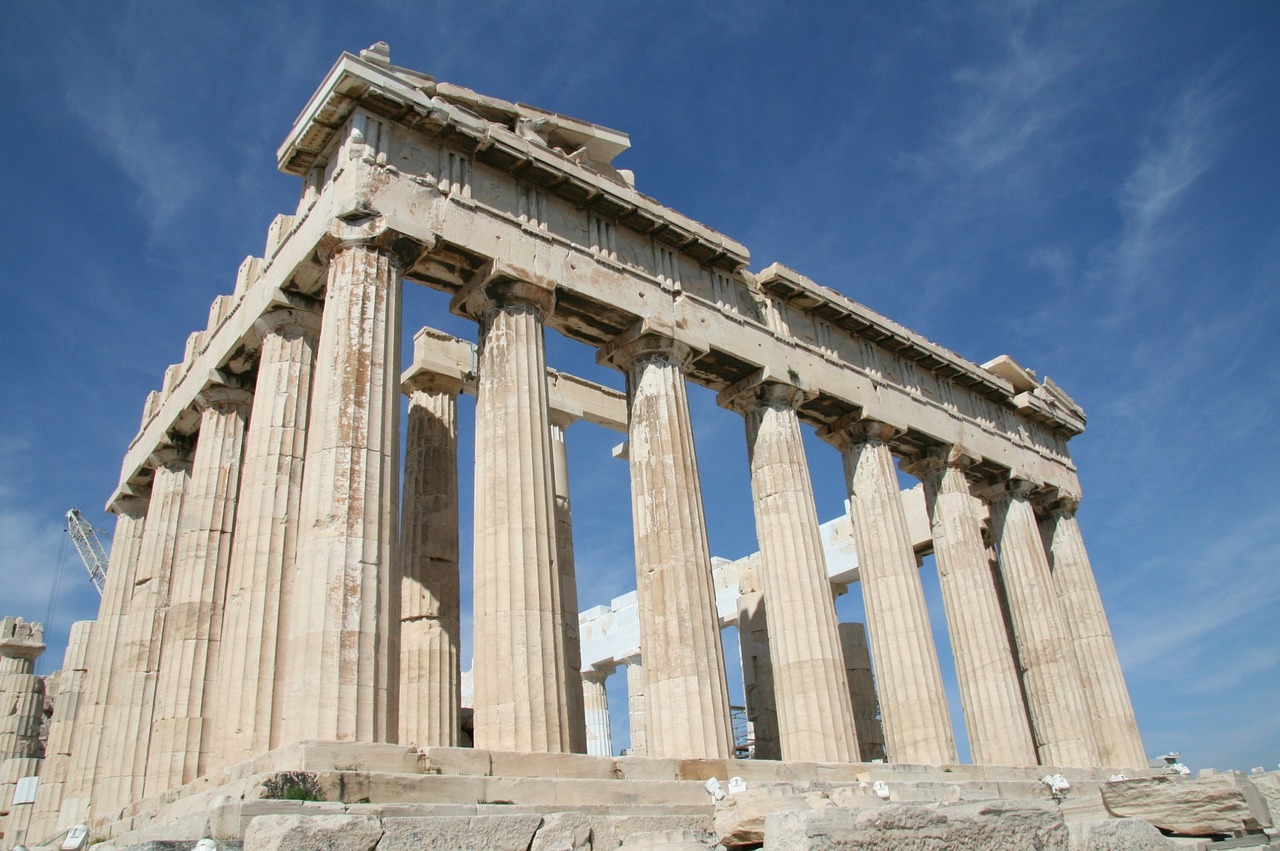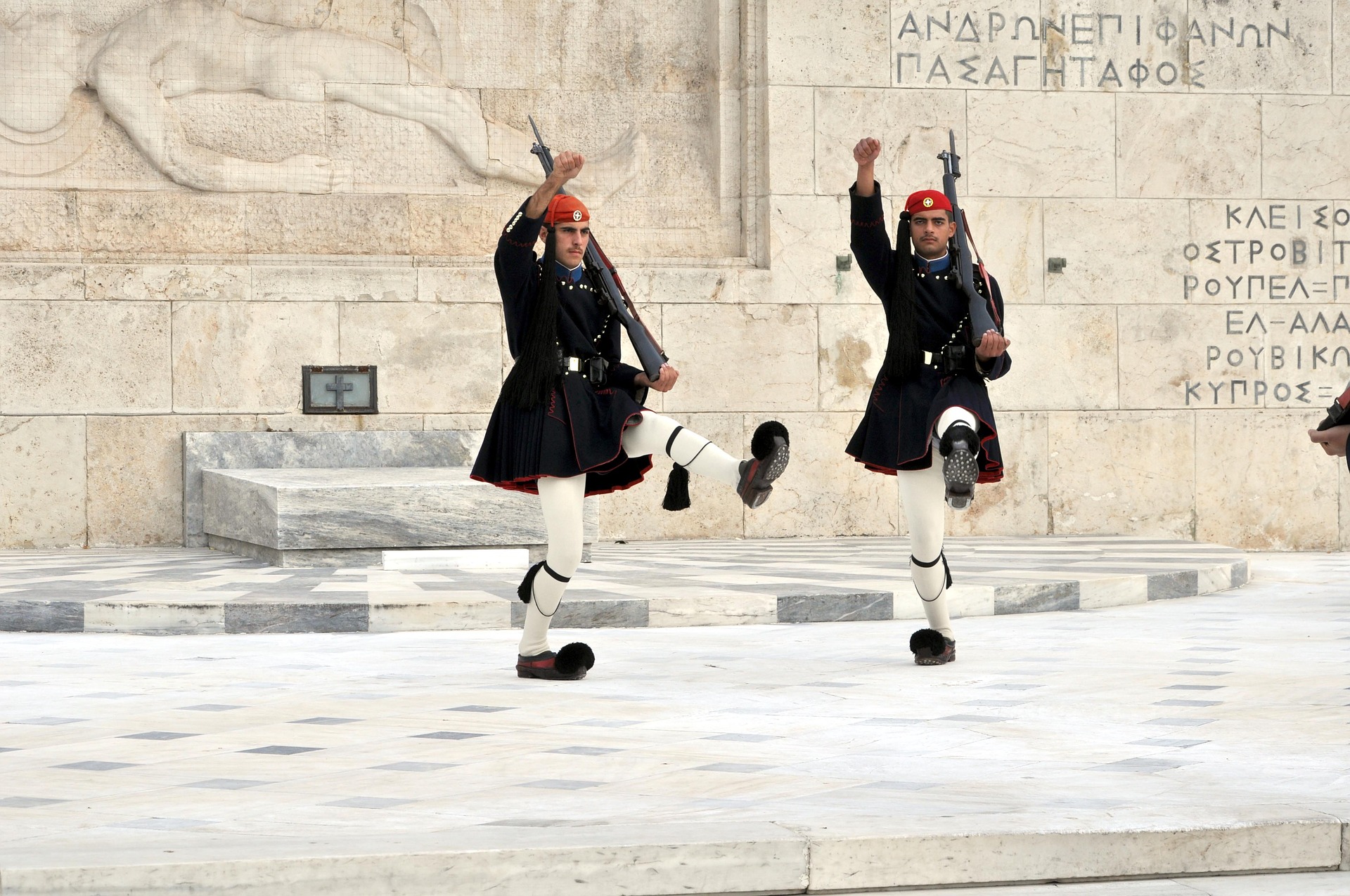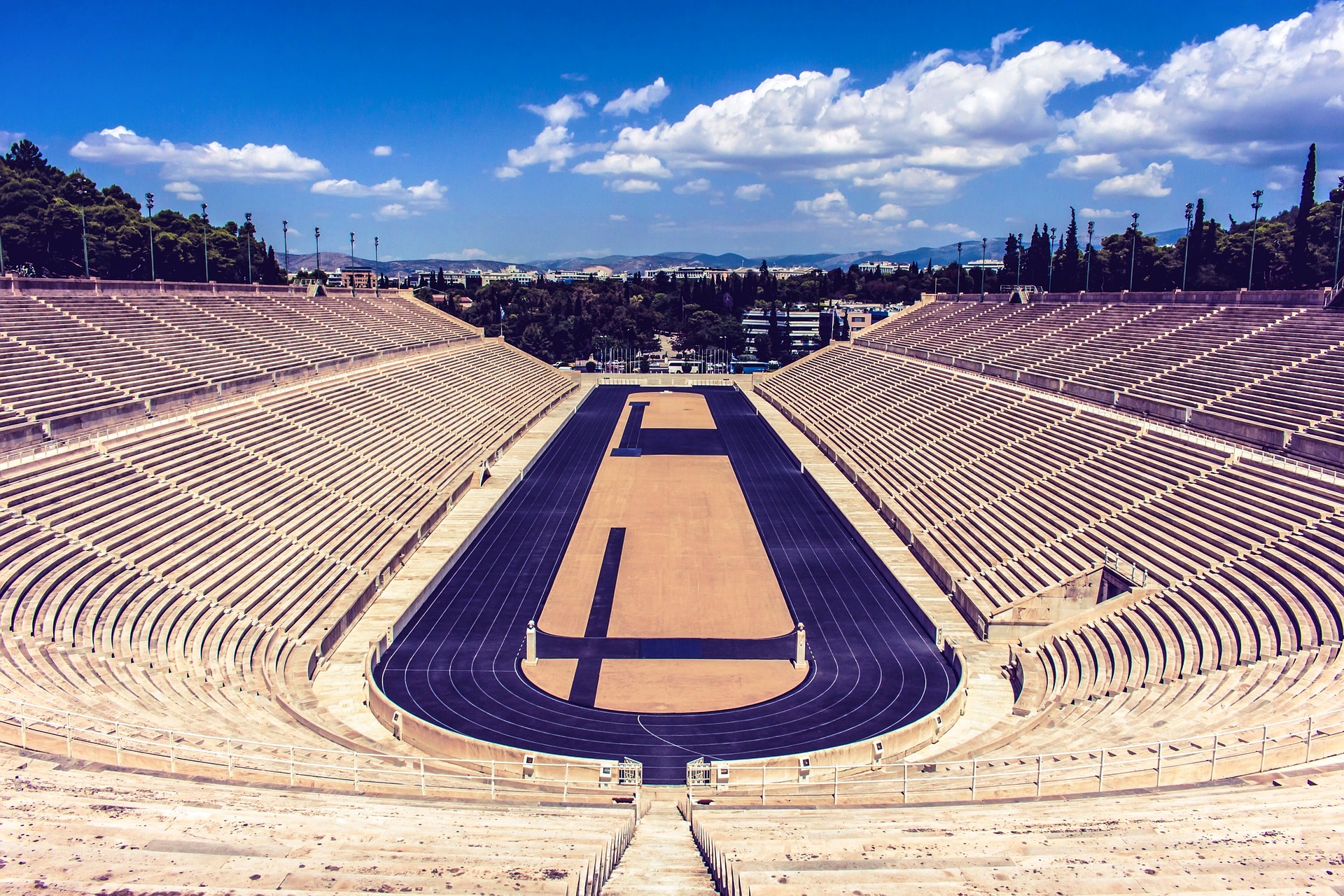A real crossroad of sights, culture, busy nightlife and… shopping. An urban paradise…
In a short distance from the Athenian Rental Tranquil Apt some of the most imposing landmarks of Athens are easily accessible and ready for you to explore. The routes you can follow are many and… very short! To make your life easier and your stay in our apartment an unforgettable experience, we selected 6 routes which you will surely enjoy even on foot!
a) Athenian Rental, Τranquil Αpt. – Αcropolis, 2,5 Km.
Heading down the Vasileos Konstantinou Avenue you will find the Panathenaic Stadium. The Panathenaic Stadium, also known as the Kallimármaro (meaning the “beautifully marbled”), is a multi-purpose stadium used for several events and athletics in Athens. The Stadium hosted the first modern Olympic Games in 1896 and it’s the finish line for the Authentic Classic Marathon, a marathon that is like no other on Earth. Reconstructed from the remains of an ancient Greek stadium, the Panathenaic is the only stadium in the world built entirely by marble and is one of the oldest in the world. Continuing the walk we reach Hadriano’s Gate. Handriano’s Gate is a monumental gateway resembling –in some respects- a Roman triumphal arch. It spanned an ancient road from the center of Athens to the complex of structures on the eastern side of the city that included the Temple of Olympian Zeus. Construction began in the sixth century BC, during the rule of the tyrant of Athens, Peisistratus. Construction was halted under Athenian democracy, as the temple was deemed a symbol of tyranny. In the Hellenistic period Antiochus IV Epiphanes, King of Syria, attempted to resume construction but work was again interrupted when he died. Still only half-finished, the temple was seriously damaged by Lucius Cornelius Sulla, who sacked Athens in 86 BC. The project was finally completed according to its original design, under the Philhellene emperor Hadrian in 131 AC. The temple was abandoned and badly damaged again during the Herulian sack of Athens in the third century, when most of the columns were quarried for use as building materials. Sixteen columns remain today, 15 of which are still standing. Apart from the main temple, the site also contains the remains of Roman thermal baths, Classical-era residences, foundations of an early Christian basilica and parts of the city’s Roman fortifications. Then, walking down Dionysiou Areopagitou street we get to New Acropolis Museum. Built during the 1990s and open since 2009, the modern Acropolis Museum was commissioned as the existing museum could no longer house the growing volume of archaeological treasures discovered on the site. Its exhibits cover the period from the Greek Bronze Age to Roman and Byzantine Greece. Up front there is the Odeon of Herodes Atticus. It’s about an ancient conservatory of the Roman period, that is located at the southwest slope of Acropolis of Athens and it was constructed entirely with Herod’s expenditure in favor of his wife. Finally, the walk comes to an end when we reach one of the most popular sights worldwide, ΑCROPOLIS. The Acropolis, or Sacred Rock, is synonymous with Athens. It is home to the Parthenon and several other ancient Greek monuments built under Pericles in 5 BC by what was then the most advanced civilisation in the world. A UNESCO World Heritage site, this is a must to visit while in Athens. (If you don’t wish to walk until there, you can get to Acropolis with metro M3 Evangelismos station -Syntagma then M2 Syntagma – Acropolis).
b) Athenian Rental, Τranquil Αpt – Syntagma, 1,8 Km.
Starting off our walk from the Athenian Rental, Tranquil Apt heading to the downtown, we stumble upon one sight after the other. First on we see Divani Caravel Hotel Athens (50 m.) and Athens Hilton Hotel (200m).There you can have a swim on their pools if your time doesn’t allow you to enjoy the greek beaches. Walking across the Megalou Alexandrou Avenue, after a 5- minute walk we meet the Greek National Art Gallery. The Greek National Art Gallery focuses on post-Byzantine Greek and European art, with a Renaissance section and a full section from the 17th to 20th centuries. This includes works from 36 Greek artists and other Europeans, including Rembrandt, Rubens, Canaletto and French Impressionists through to Picasso, Braque and Mondrian. (Closed and renovating for the current time). On the Vassilis Sofias Avenue (700m. away from the apartment) there is the War Museum. The Museum’s exhibition areas are distributed over four levels (floors) and present images of Greek history from antiquity to the present. The War Museum has organized and operates the following: Photographic Archive. This Archive includes 20.000 historic photographs dating from 1897 until the Cypriotic Struggle for Independence (1955-1959), and the photographs are classified according to specific historic periods. Historic Archive, which comprises personal mail and diaries of officers and soldiers, newspapers, magazines, post cards and personal files. Film Archive, which includes films in which several historical events have been recorded. Collection of maps and engravings, mainly depicting the Greek state. A Library with thousands of books and prints mostly concerning the Greek history.Right Next to it there is the Byzantine and Christian Museum. The Byzantine and Christian Museum offers an impressive collection of Christian and Byzantine art. Exhibits are divided into ancient (4th-15th century) and modern (15th-20th century). The museum has over 25,000 artefacts in its possession. The artefacts date from between the 3rd and 20th century AD, and their provenance encompasses the entire Greek world, as well as regions in which Hellenism flourished. The size and range of the collections and value of the exhibits makes the Museum a veritable treasury of Byzantine and post-Byzantine art and culture. On the opposite side you can visit the Museum of Cycladic Art, The Museum of Cycladic Art is dedicated to the ancient cultures of the Aegean and Cyprus, with special emphasis on Cycladic Art of the 3rd millennium BC. Hundrend meters away (100m.) you will have the chance to visit Benaki Museum. The Benaki Museum has several sites, but the main one is the former Benaki family mansion in central Athens. It houses a diverse collection, including Islamic art from across the Near East, Chinese and pre-Colombian art, as well as a particularly complete and important collection of Greek artefacts from ancient times to the early 20th century. Next location is The B & M Theocharakis Foundation. The B & M Theocharakis Foundation is primarily concerned with music and fine arts, both in Greece and internationally, with a focus on the emergence of the Modern and its continued development over the 20th and the 21st century. The Foundation aims to encourage the public to enter into a wide-range and interdisciplinary dialogue with music and visual arts, to promote the work of Greek artists abroad, to employ every means at its disposal to disseminate the content of its activities, and to develop networks facilitating collaboration and exchange. On the opposite side you will find the ideal place to take a rest as well as enjoy a green oasis often overlooked by people visiting Athens, National Garden. The National Garden (formerly the Royal Garden) is a public park of 15.5 hectares (38 acres) in the center of the capital. It is located directly behind the Greek Parliament building (The Old Palace) and continues to the South to the area where the Zappeion (The Zappeion is currently being used as a Conference and Exhibition Center for both public and private purposes) is located, across from the Panathenaiko or Kalimarmaro Olympic Stadium of the 1896 Olympic Games. The Garden also encloses some ancient ruins, tambourines and Corinthian capitals of columns, mosaics, and other features. In the National Garden there are a duck pond, a Botanical Museum, a small cafe and a Children’s Library and playground. Right after we pass by The Greek Parliament we get to see the Syntagma Square. Syntagma Square is the most important square of modern Athens from both a historical and social point of view, at the epicentre of commercial activity and Greek politics. The Tomb of the Unknown Soldier is a war memorial located in Syntagma Square, in front of the Old Royal Palace. It is a cenotaph. It is a cenotaph dedicated to the Greek soldiers killed during the war. It was sculpted between 1930-32 by sculptor Fokion Rok. The tomb is guarded by the Eyzones. Eyzonas is the name of several historical elite light infantry and mountain units of the Greek Army. Today, it refers to the members of the Presidential Guard, an elite ceremonial unit that guards the Greek Tomb of the Unknown Soldier , the Presidential Mansion and the gate of Evzones camp. An Evzone is also known, colloquially, as a Tsoliás. Every hour, the changing of the guard ceremony, performed by the Presidential Guard, is conducted in front of the Tomb of the Unknown Soldier on the area between the Syntagma Square and Parliament building. On certain days, a ceremonial changing of the guard occurs with an army band and the majority of the 120 Eyzones present at 11 am. The Grand Change is a popular Sunday morning spectacle for Athenians and tourists alike.
(If you don’t want to walk, you can get M3, bus 732 “bus stop vrysaki” 50m from the apartment, and bus 224 “bus stop Nosokomeio Sygrou-Caravel” 80m from the apartment).
c) Kolonaki –Lycabettus (access 15-minute walk)
Kolonaki is an upscale neighbourhood and one of the main shopping areas in Athens, with many fashion and designer boutiques and jewellery stores. It is also home to a variety of museums and art galleries. Here one can find a big variety of all kind of restaurants and cafes. The choices are numerous. Furthermore don’t skip visiting the Dexameni Square and in particular the honomynous greek cafe. It’s one of those places in Athens you have to visit because of its historic past. It’s a quiet traditional greek cafeneion, great for a coffee or a “meze” in summer. The blackboard hanging outside Dexameni’s cramped kitchen reads, “Kindergarten-Bar-Nursing Home,” the title jokingly bestowed upon the café by the eminent novelist and poet Alexandros Papadiamantis. He was among the literati who made Dexameni their regular hangout shortly after it opened in the early 1900s – so regular that the place ended up serving as a home-away-from-home for all stages of life. Quite easily then, you can visit Lycabettous, a Cretaceous limestone hill, at 300 meters (908 feet) above sea level. Pine trees cover its base, and at its two peaks are the 19th century Chapel of St. George, a theatre, and a restaurant. The name also refers to the residential neighbourhood immediately below the east of the hill. The hill is a tourist destination and can be ascended by the Lycabettus Funicular, a funicular railway which climbs the hill from a lower terminus at Kolonaki. (The railway station can be found at Aristippou street. The hill has a large open-air amphitheatre at the top, which has housed many Greek and international concerts).
d) Monastiraki Flea Market (Agora- Stoa Attalou- Anafiotika- Plaka)
Monastiraki counts as the most visited area of Athens, for both Greeks and tourists. It is one of the most picturesque areas of Athens, neighbouring and connected to Plaka. Its famous flea market ,a paradise for collectors , you can find anything from Greek souvenirs and Greek art shops, antiques, carpets, old books , old stamps and old books ,you can even find clothing and helmets from the second world war! But the best thing about going to Monastiraki is the cafes which on sunny weekends is the best place to enjoy a drink or a coffee or an ouzo while looking at the view of the Acropolis ,the Parthenon and the Agora. (Access Μ3 Εvagelismos –Monastiraki, 15-20 minutes from the Athenian Rental Tranquil Apt).
e) Athens Concert Hall (Megaro Moussikis) (Access 12 minutes on foot from Athenian Rental, Τranquil Αpt).
The Athens Concert Hall is located on Vasilissis Sofias Avenue, just a few minutes walk from Athenian Rental Tranquil Apt. The Hall was inaugurated in 1991 with two halls. Since then it has been augmented with two more halls and now has a total of four: two large and two smaller ones. The Hall has optimal facilities for opera performances, and some operas are presented every season. The Megaro Moussikis station of the Athens Metro is just outside the Hall, on Line 3. In the same area, you have the opportunity to visit The Athens Municipality Arts Center at Parko Eleftherias (Freedom Park) and the Museum of Anti-dictatorial and Democratic Resistance which belongs to a nineteenth-century complex of military quarters. Indeed, the recent history of this site is related to repressive governmental measures including censorship, persecution, and the torture of dissidents. Right next to it, you can have a drink at Mavili Square, one of the most “vivid” squares in Athens, with lots of coffee houses, bars and restaurants that gather people all day long.
f) University Campus – Hymettus…for the alternative ones!
Moreover, if you want to experience a different aspect of Athens’ life and if you are a naturalist or a student, then the University Campus (Panepistimioupolis) is the perfect place for you and it’s just a 10-minute walk away. It covers an area of 1.300 acres full of green that is connected to Syggrou Forest which finally leads to Mt. Hymettus’ (accessible by a 10-minute walk or bus 250 from bus stop “Caravel”). With 44 different types of orchids alone, Mt. Hymettus is an oasis often overlooked by people visiting Athens. Covered with pine forests and small lush valleys, this lung of Athens gives a welcome relief from the hustle and bustle of the city. With well-marked paths leading you up to green slopes, every season hides special delights. A true botanical paradise, Mt Hymettus has been renowned since antiquity for its honey and the colour of its marble, of a slightly darker hue than that of Penteli. The mountain is long, narrow, rocky and arid, with a flora that numbers over 600 plant species. These include 31 endemic species, whilst the most interesting plants are to be found among the shrubs. This low mountain has one of the richest assortments of orchids in Greece and Europe (44 species). When walking through the brush above the Monastery of Kaesariani, (the monastery is dedicated to the Presentation of the Virgin to the Temple . It is built in the forest at an altitude of 350 m. The main church must have been built upon the remains of an early-Christian church of the 5th or 6th century AD. It dates back to the 11th century AD or to the early 12th century AD) you can easily come across over ten orchid species in less than an hour.
Mt Hymettus provides refuge to endangered bird species, including the rare Sardinian warbler, the rock nuthatch, the peregrine falcon, the osprey and the long-legged buzzard. In the summer the scent of thyme and oregano wafts with each step you take on the dried undergrowth, while in spring the blooming wild flowers decorate the mountain sides with their colours. From the top you can enjoy the view of Athens, the Saronic Gulf and the mountains of the Peloponnese.
Athens International Airport
Athens International Airport is 33 km from the Athenian Rental Tranquil Apt and easily accessible, with direct trains from Evangelismos station on metro M3. The journey takes 50 minutes. By car count 28 minutes without traffic.





